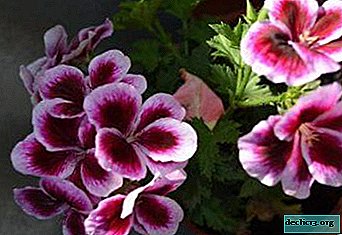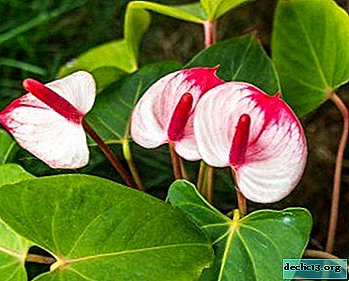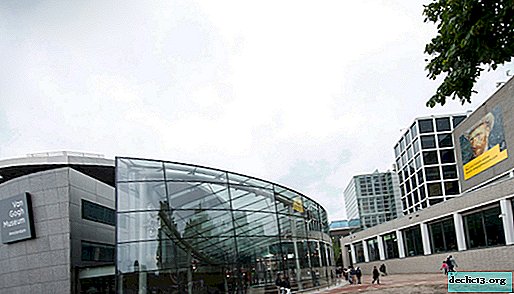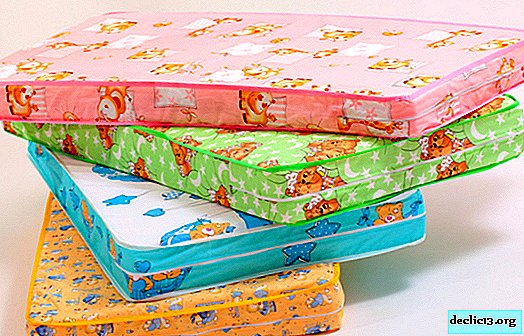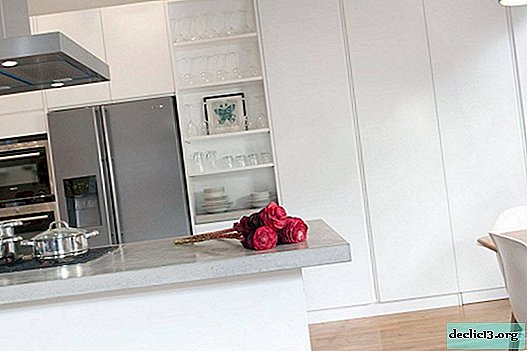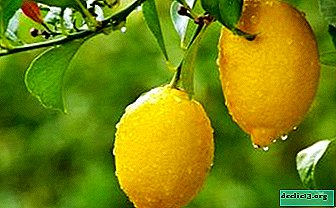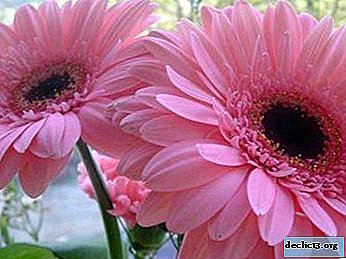Why do leaves of a room and garden rose turn yellow and fall? Recommendations for eliminating the causes
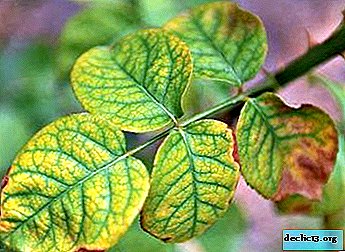
The color of the leaf plates and stems of the plant, which coincide with the characteristics of a particular variety, is an indicator of its health. For the owner of the rose, the appearance of yellowness is an alarming signal that the plant is uncomfortable and an occasion to search for the causes of the symptom in order to eliminate them as soon as possible.
We will analyze in the article why room and garden roses suddenly start to turn yellow, then the leaves begin to dry and fall off, what should be done in this case, how to prevent repeated yellowing.
The nuances of yellowing street and indoor flower
Why do leaves of a domestic rose in a pot turn yellow and fall off? The list of factors that can lead to yellowing is much shorter for a room rose than for a garden rose. In indoor conditions, you can adjust the temperature conditions, air humidity and it is easier to track the degree of soil moisture.
Reference. A rose bush growing in a garden is prone to attack by a much larger number of pests than a potted plant.What it is?
 Yellowing is the appearance of a yellow tint on the leaves, stems or flowers of a rose, arising, as a rule, as a response to unacceptable to the rose growing conditions or infection by pests.
Yellowing is the appearance of a yellow tint on the leaves, stems or flowers of a rose, arising, as a rule, as a response to unacceptable to the rose growing conditions or infection by pests.
The intensity of the color change depends on the degree of damage and may be accompanied by drying or dying of parts of the plant.
A symptom may appear as the appearance of a yellow hue in the stem and flowers, the active yellowing of the entire leaf plate or only the tips and edges of the leaf, the appearance of yellow spots. The process can begin both from the top of the plant and from the lower leaves, depending on the reasons.
What parts of the plant can this affect?
Most often, the leaves turn yellow at the rose bush, also due to an ailment, the color can change the stem and flowers. And on the flowers, yellowness is more like rust spots.
Why is this happening?
The following factors can lead to yellowing of a room rose:
- Low temperature of water for irrigation - you need to moisten the rose with water only at room temperature.
- Drafts. You can not put a flower near an open window.
- Rare irrigation or overflow. The moisture content of the soil must be balanced.
- Lack of fresh air. If possible, in the summer the pot should be taken out into the garden or onto the balcony, or the room should be well ventilated.
- Lack of regular feeding. Rose requires the mandatory introduction of additional nutrients into the soil.
- Incorrect transplant. Moving to a new container should be carried out as carefully as possible so as not to damage the plant.
- Damage to plants by rust, spider mites or thrips.
Yellow leaves on a garden rose may appear if:
- Sudden temperature changes occur.
- Rose grows on a too shaded area.
- The place where the rose grows is not protected from strong winds.
- The plant does not get enough moisture.
- Prickly beauty lacks nutrients.
- Damage by pests or diseases has occurred. The damage is caused by a red spider mite, aphid, rosaceous scale, nematode and black spotting.
When is the process natural?
As they grow older, the leaves of the rose turn yellow and fall over time - this process can be considered natural, no treatment measures are necessary in this case, you just need to remove the outdated leaves in a timely manner and maintain the most comfortable conditions for the growth of the rose. In some varieties, yellowing of the leaves indicates preparation for winter.
Important! Natural yellowing is not massive and is not accompanied by any deformation of the plant.What can it lead to?
The yellowed rose bush is losing its decorative effect. Often this ailment is accompanied by loss of leaves. The rose can stop growing, often the deformation of the shoots occurs. As a result, the plant dries and dies.
What if the part of the plant turns yellow?
Stem
Rose jaundice is a disease that affects not only the leaves, but also the shoots of the bush.
Overcoming an ailment helps:
- Cutting and destroying affected stems.
- Treatment of uninfected plant areas with insecticides.
Leaflets
 It is known that rose leaves can become yellow with parasite lesions.
It is known that rose leaves can become yellow with parasite lesions.
For example, a plant can be affected by an insect of the arachnid family - a spider mite, the destruction of which requires a set of measures:
- The temperature in the room must be lowered, and air humidity increased.
- Isolate the rose from other plants.
- Wash the bush with a solution of laundry soap. Treat the plant and soil with insecticides at least two times with an interval of ten days.
Flowers
To return to the rose a healthy flowering appearance will help the right dressing:
- Once a week, the bush needs to be watered with a solution of humic fertilizer.
- Add compost to the ground.
How to eliminate the cause?
Improper care
- For a room rose:
- If excess sunshine leads to burns, you need to rearrange the pot in another place.
- A plant suffering from drafts or lack of lighting can also be cured by simply rearranging the pot.
- If the rose turns yellow due to an incorrect transplant, you need to place it in a warm place and avoid stress until the root system passes adaptation. If the flower continues to wither, it must be replanted in compliance with all requirements.
- For a garden rose:
One of the main reasons for yellowing a garden rose is its poor position on the site. If the plant suffers from cold winds or lack of sun, it is best to transplant it to the site from the south or southeast side of the flower garden.
Wrong watering
- Rescue measures for a room rose:

- Adjust the frequency of watering - for an adult plant, this is two to three times a week.
- When waterlogging the earth, watering should be temporarily stopped, replacing them with spraying.
- If the overflow has turned to rot, a transplant is required.
- For a garden rose:
- If the plant received sunburn during spraying and is covered with yellow spots, then you need to carry out the procedure in the morning and use only warm water for this.
- Insufficient watering leads to yellowing of the leaves and wilting of the whole plant, it is necessary to carefully monitor the drying of the soil during the absence of rain.
Lack of essential trace elements
- For a room rose:
- With a lack of iron, which is indicated by yellowing spots, starting from the top of the plant, you can make any acidifying fertilizer.
- With a lack of nitrogen, when the plant turns yellow intensively, starting with the lower leaves, you need to make universal fertilizer or urea.
- For a garden rose:
- Lack of magnesium most often occurs in plants planted in acidic soil. You can restore the lack of trace elements by adding magnesium sulfate or ash.
- Potassium deficiency, leading to regional yellowing of the leaf, can be corrected by the introduction of complex fertilizers or top dressing with wood ash.
Disease
- For a room rose:
- If chlorosis struck the rose, the use of Antichlorosin, which is dissolved in water and watered the flower once every two weeks, will be effective.
- Black spotting will help defeat any fungicidal drug.
- Affected powdery mildew roses need to remove diseased shoots, leaves and buds, and after that the entire bush should be treated with a fungicide solution.
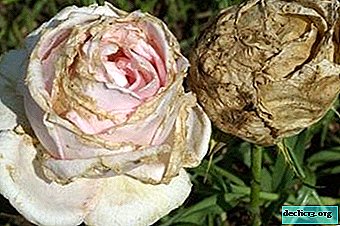
- For a garden rose:
Rust on roses develops due to the defeat of the plant by the fungus. Fungicide treatment will help cure the disease.
We offer you to watch a video about rose diseases and what to do to treat them:
Pests
- For a room rose:
- When infected with a rosette, the plant must be completely washed with a soapy solution and treated with an insecticide. To enhance the action of a chemical solution, you can add a tablespoon of alcohol to it.
- To get rid of thrips, you need to increase air humidity, isolate the rose bush from other plants and spray it with an insecticidal preparation. You also need to cultivate the soil and the place where the flower stood.
- For a garden rose:
The prickly beauty often suffers from gnawing parasites - caterpillars, bugs, sawfly larvae. Against pests, you can spray the bush with infusions of garlic, tobacco or celandine. Or use systemic insecticides.
Next you can watch a useful video about rose pests and insect control:
Prevention
For a home rose, it is important to ensure a constant flow of fresh air. In the period from October to February, the plant needs rest. After flowering, watering should be reduced and the rose should be transferred to a cooler room. For garden roses, pruning twice a year is important. In preparation for wintering and summer. Plants that repel pests such as lavender, marigolds, marigold can be planted next to the bush.
Proper care and care are important both for indoor representatives of the rose, and for those who are planted in the garden. Disease prevention and timely response to the alarming symptom of changing the color of the rose bush will help prevent the death of the plant.




